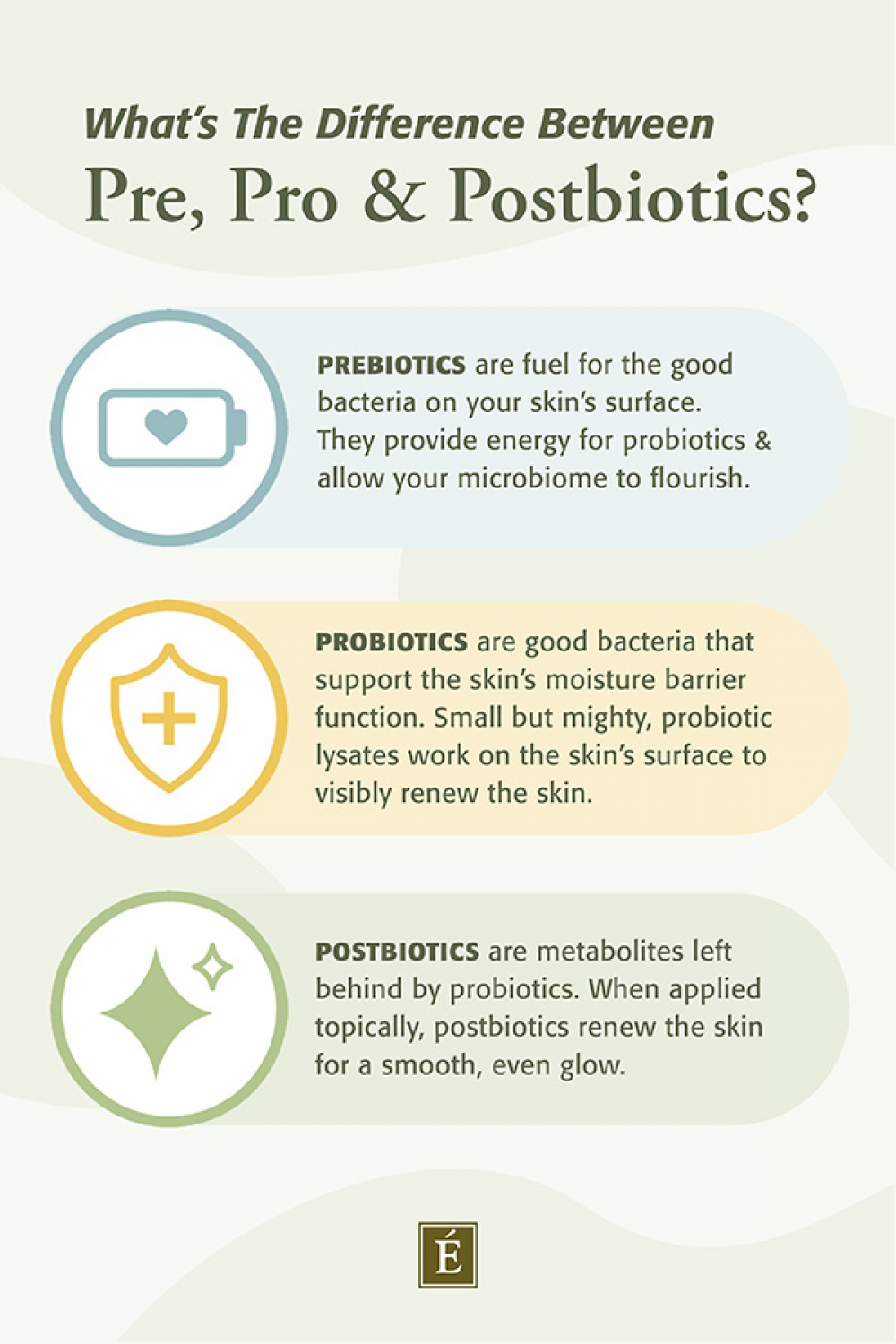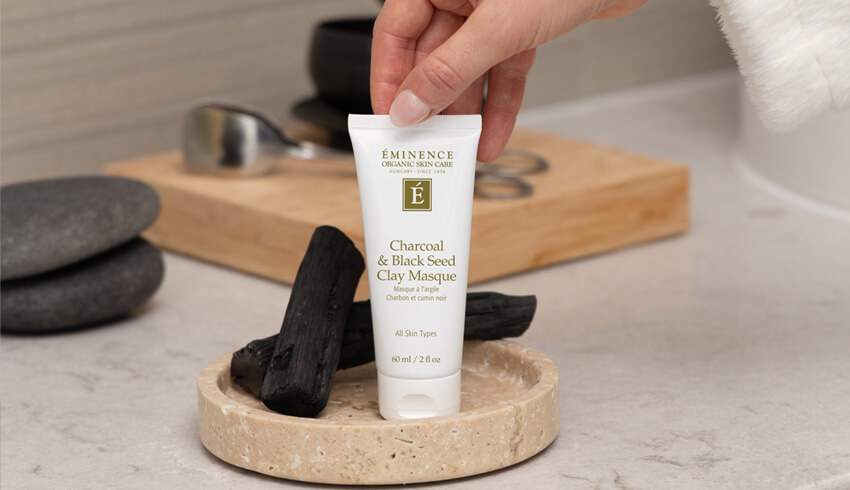
If you’re dealing with dry, irritated, dull or red skin, then choosing probiotic, prebiotic and postbiotic-based skin care is a great way to support the skin barrier and the health of your skin microbiome. These symptoms may be a result of an unbalanced skin microbiome and a compromised skin barrier. Read on to learn about the difference between pre, pro and postbiotics and why these ingredients may improve your skin’s health and luminosity.

The Difference Between Prebiotics, Probiotics & Postbiotics
Before we dive into the lengthy definition, you can sum up the differences in one sentence: Prebiotics feed probiotics which, in turn, produce postbiotics. Confusing? Let’s unpack that concept a little bit more.
Prebiotics
Prebiotics are substances (dietary fibers) that fuel the good bacteria on your skin’s surface. These dietary fibers are naturally found in high-fiber foods like yams, asparagus, bananas and apples. For the digestive system, you may be aware that prebiotics are sometimes referred to as “intestinal fertilizers” for probiotics, which promote good bacteria in your gut.
Probiotics
Probiotics are good bacteria that support the skin’s moisture barrier function and work to overthrow any unfriendly bacteria. Probiotics can be found in supplements or from certain fermented foods. But probiotics can also be found in skin care products to balance the skin’s microbiome. Usually, when looking at the benefits of probiotics, experts are referring to the gut flora that ensure your metabolic activities are healthy. However, probiotics can also help with skin symptoms such as dull, dry, itchy or red skin.
When applied topically, probiotics work together with prebiotics to support the function of the skin barrier and to visibly renew the skin. Probiotics support skin barrier health and provide a defense against environmental stressors such as UV rays and pollution or lifestyle factors such as smoking and diet.
Postbiotics
Probiotic bacteria produce postbiotics after they consume prebiotics (fiber). Postbiotics are the compounds or metabolites that are left behind, according to Harvard Health.
You can read a detailed account about the different sources of probiotics in food in this guide, but some foods that can boost the concentration of postbiotics in your gut include:
- Sourdough bread
- Miso soup
- Soft cheeses
- Kefir
- Yogurt
- Buttermilk
- Pickles
- Tempeh
- Sauerkraut
And when applied to the skin, postbiotics reveal a smooth, radiant glow. Let's explore pre, pro* and postbiotic skin care next.
Product Picks
What Is Biotic Skin Care?
Biotic skin care helps to maintain a balanced microbiome, which is the collection of microorganisms and good bacteria that live on your skin. It’s also designed to nourish the microbiome so that the skin barrier remains intact and clear of harmful bacteria. Biotic skin care also contains pre, pro and postbiotics, ingredients that support the microbiome.
Our products in the Kombucha Microbiome Collection are formulated with pre, pro* and postbiotics to comfort the skin and support the microbiome’s natural balance. This collection also visibly replenishes the moisture barrier to reveal an even and healthy-looking complexion. It’s important to note that this collection does not contain live probiotic cultures; rather it contains a probiotic lysate ferment. Translation? Probiotic lysates are the remnants of formerly live probiotic bacteria. These lysates are essential in supporting and balancing the skin environment, and they enhance the function of the skin’s moisture barrier by repairing skin and maintaining skin health.
You can find the following ingredients in various products within the the Kombucha Microbiome Collection:
- Probiotic (lactococcus ferment lysate)*: Supports and balances the skin microbiome, enhances the function of the skin moisture barrier to repair dry skin and maintain healthy-looking skin.
- Prebiotic: Fuel that is utilized by microorganisms, resulting in a balanced skin microbiome.
- Kombucha ferment (Postbiotic): Derived from fermenting black tea, this superfood is rich in postbiotics that visibly refresh and renew the skin.
- White tea: Rich in antioxidants, helps maintain healthy-looking skin, combats the appearance of skin dullness and encourages glow.
- Jasmine flower: Relieves redness and soothes dry skin resulting in an even skin tone.
Watch Lead Skin Care Trainer Natalie Pergar answer your questions about pre, pro* and postbiotics and the Kombucha Microbiome Collection.
Are you considering using skin care with prebiotics, probiotics and postbiotics? We would love to hear from you. Let us know your thoughts in the comments or join the conversation on social media.
*Does not contain live probiotic cultures.




